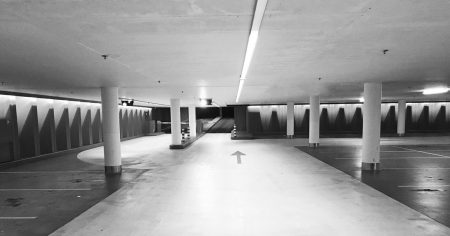It is said that the best car park is the one you don’t have to build.
With that in mind, one key question to be asked when planning a new development should be: what is the forecasted parking demand and the existing supply in the vicinity of the site?
Parking spaces have a significant impact on construction costs which, among other things, affects house affordability. Therefore the number of spaces to be incorporated must be the lowest possible to accommodate demand, having regard to a number of factors not least of which is the availability of public transport options nearby. Nevertheless, we note that the number of car park spaces built is most likely determined by the local minimum requirements of the planning legislation rather than a demand versus supply analysis.
Parking minimum requirements
An article published in The Conversation demonstrates the inefficiency of minimum requirements to balance parking demand and supply. According to the article, there are 49,500 residential parking spaces in the City of Melbourne compared to 36,951 cars indicating a surplus of 12,549 residential parking spaces. In other words, at least 25% of the residential parking inventory is vacant.
Notwithstanding, the general public and even the local authorities would probably be against to the development of residential buildings with few or no parking spaces, even in transit-rich areas. Additionally, the perception of drivers looking for a parking space in Melbourne is that there isn’t enough parking (especially on-street parking).
Parking management strategies
Most likely this perception is a result of the current way we manage parking supply. Instead of having a pool of parking spaces available within a community, each development has its own supply which will not necessarily be completely utilised. In addition, where there is free or cheap on-street parking many drivers will probably prefer to circle around looking for an available space than driving to a more expensive off-street car park.
There are parking management strategies that can be put in place to ensure an efficient use of the parking supply as different user groups usually have complementary parking needs. For instance, in a mixed-use precinct, residents in general will park overnight during weekdays and leave the spot empty during the day whilst workers, customers visiting shops or visitors to offices will probably need parking space exactly during that time.
Of course, there are security concerns as well as regulations in place to prevent the use of private car parks by the general public. Moreover, not all existing facilities have the infrastructure to allow this type of use. Nevertheless, the use of parking by different groups can be considered when planning new developments and redevelopments.
A parking inventory that is managed across developments for the benefit of the community as a whole is certainly more effective. We have discussed this in our article Managing Parking Demand and Supply.
In conclusion, instead of having an emotional discussion about parking, we should have a conversation based on facts and create coordinated policies to utilise the existing parking supply efficiently. Promoting a better use of off-street parking can result in the reduction of on-street parking freeing the street to other road users such as pedestrians, cyclists and public transport users.
Related Content:
Blog post:
The social inequality of parking requirements
Articles:
Managing Parking Demand and Supply

